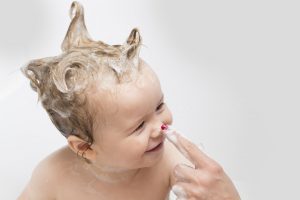
Parabens are an antiseptic, antioxidant preservative used in cosmetics used to keep molds, bacteria and other microorganisms out of food and personal-care products. Commonly used parabens include methylparaben, propylparaben, butylparaben, and ethylparaben.
Experts estimate that 85 percent of all personal care products contain parabens. Personal-care parabens—shampoos, makeup, shaving gels and more—are absorbed through the skin. Even though the human body can process and expel parabens, constant exposure maintains small levels of parabens in our bodies.
According to the Center for Disease Control, methylparaben and propylparaben are present in the bodies of in most Americans, with women showing higher concentrations than men. Parabens have also infiltrated our water systems and, a 2015 study shows, the bodies of marine mammals, like dolphins and polar bears.
Scientists are trying to figure out whether that presence is conclusively harmful. Parabens are endocrine disrupters. They mimic how estrogen works in the body1,2, though at weaker levels than the real hormone. In an influential 2004 study, researchers found that parabens could accumulate in breast tissue and specifically in breast cancer tumors. The study didn’t compare paraben levels to those in healthy breast tissue or conclude that the parabens caused the cancer. But the much-cited study set off a wave of consumer concern about paraben use—and unanswered questions about their effect on the body.
That concern remains strong today. As more studies examine links between endocrine disrupters and a range of disorders, “paraben-free” has become a common selling point for products marketed to naturally minded consumers. Consumer advocacy groups caution personal-care product users, especially women, to limit their paraben exposure. And the European Union has banned some parabens in cosmetics and tightly regulated their use in other products.
The global concern over paraben use is leading formulators to find acceptable alternatives to preserve and protect their products. UL’s Industry Analytics has been tracking the trending ingredients stepping in to take parabens’ place in personal-care formulations.
In addition to ever-popular preservatives alcohol and glycerin, other paraben alternatives have been rising in search popularity. Phenoxyethanol, sodium sulfate, salicylic acid, sodium benzoate, and sodium gluconate have all shown growth in search volume.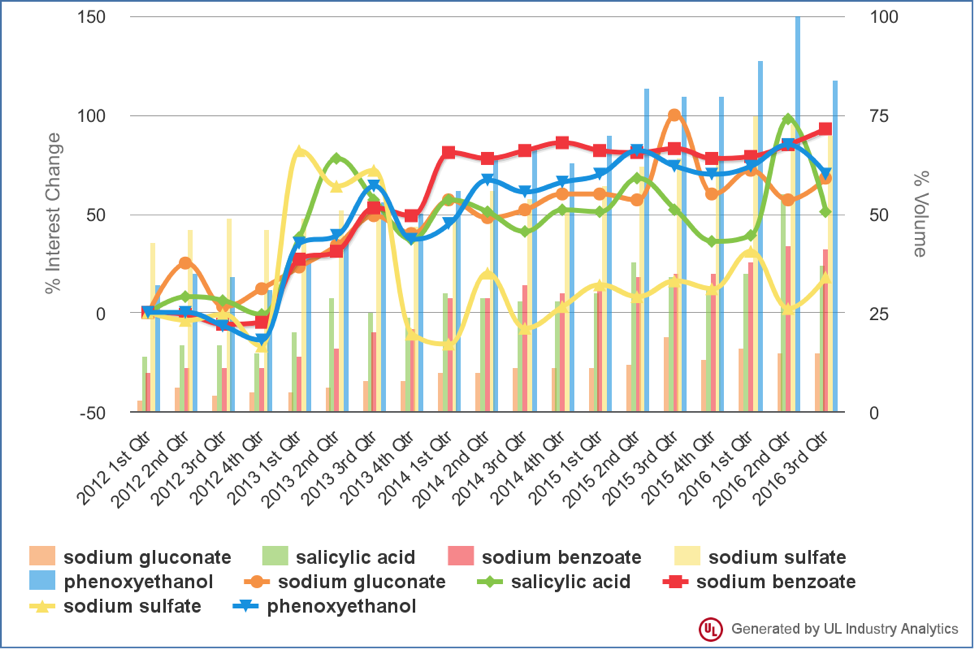
Showing up with less volume, but still strong growth, are preservatives sodium dehydroacetate, honey, benzoic acid, sorbic acid and tea tree oil.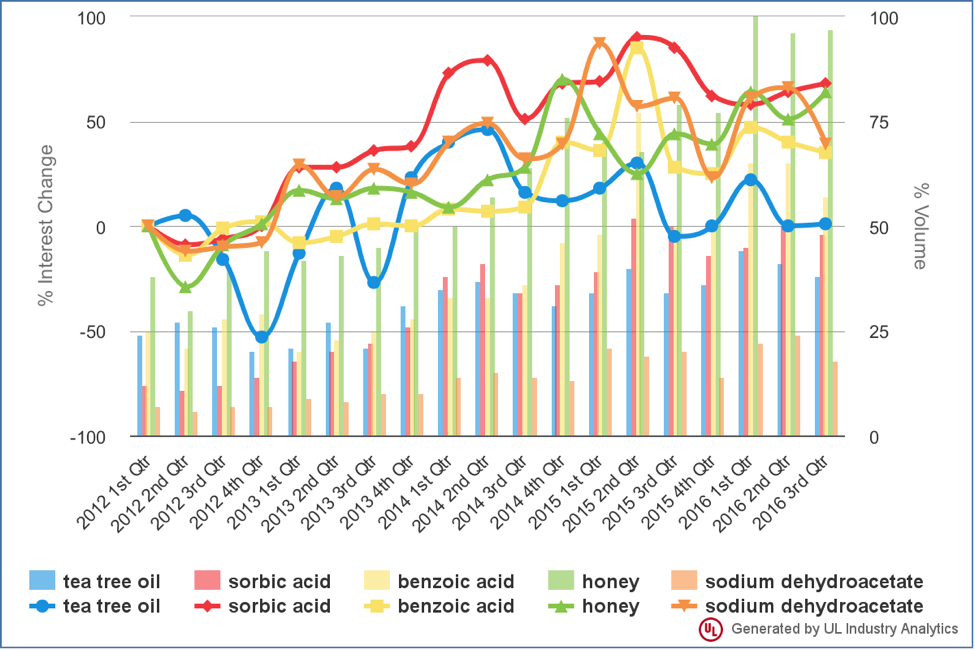
More niche paraben alternatives include lemongrass oil, sodium anisate, clove oil and grapefruit extract. Leuconostoc (radish root) is reporting a particularly big upswing in popularity.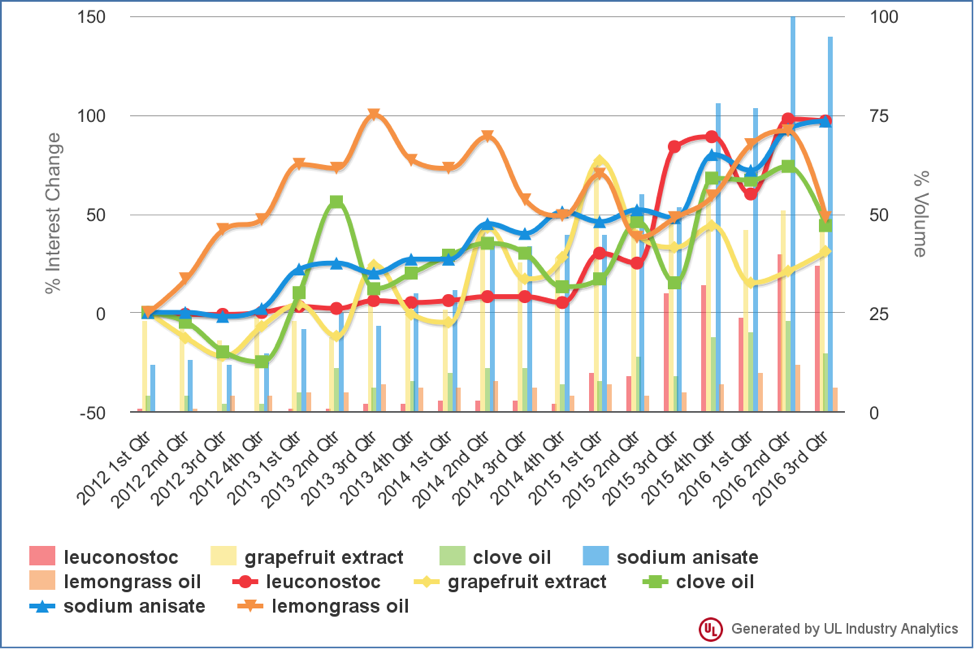
Finally, a few preservatives are featuring more recent growth, particularly the spike of O-Cymen-5-OL (isopropyl methylphenol) in the past few quarters. Hinokitiol, Japanese honeysuckle extract and usnic acid are more slowly gaining in search volume as well.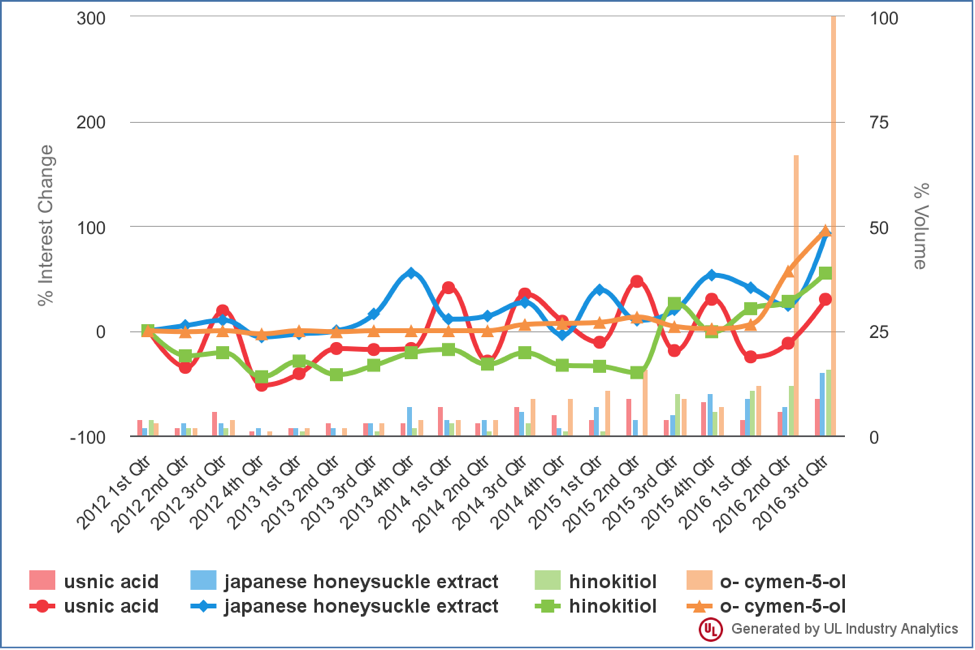
References:
- FAQ: Parabens and Breast Cancer
- Paraben esters: review of recent studies of endocrine toxicity, absorption, esterase and human exposure, and discussion of potential human health risks.
| Sponsored Products |
| GlucoTain® Flex |
| GlucoTain® Plus |
The views, opinions and technical analyses presented here are those of the author or advertiser, and are not necessarily those of ULProspector.com or UL Solutions. The appearance of this content in the UL Prospector Knowledge Center does not constitute an endorsement by UL Solutions or its affiliates.
All content is subject to copyright and may not be reproduced without prior authorization from UL Solutions or the content author.
The content has been made available for informational and educational purposes only. While the editors of this site may verify the accuracy of its content from time to time, we assume no responsibility for errors made by the author, editorial staff or any other contributor.
UL Solutions does not make any representations or warranties with respect to the accuracy, applicability, fitness or completeness of the content. UL Solutions does not warrant the performance, effectiveness or applicability of sites listed or linked to in any content.



Sarah, please explain in more detail what “% Interest Change” and “% Volume” means. What is the definition of these two indicators?
//Parabens are an antiseptic, antioxidant preservative used in cosmetics used to keep molds, bacteria and other microorganisms out of food and personal-care products//
I have worked very closely with parabens for 25 years, and I have never seen anyone claim them to be either antiseptic or antioxidant in all that time, nor have I seen any claims that they are able to control any other types of microorganisms. Please can you supply data to support these claims?
Hi Dene,
Thank you for your question. I am the Knowledge Center content manager. Those claims were sourced from a Cosmetics Compliance report and FDA.
https://cosmeticscompliance.iqpc.com/taboo-cosmetic-ingredients-and-their-alternatives-mc
http://www.fda.gov/cosmetics/productsingredients/ingredients/ucm128042.htm
Hope this helps, and thanks for contributing to the community!
Angie